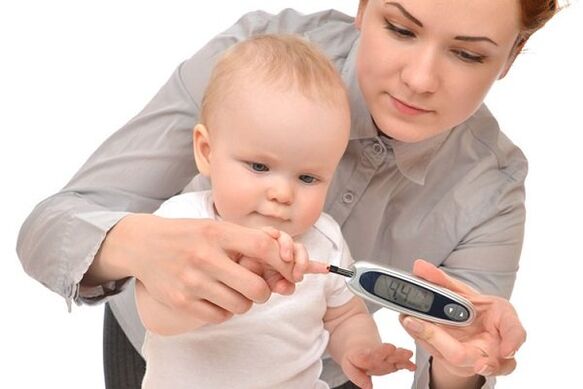To prevent the disease, it is necessary to know the main symptoms of diabetes. Diabetes mellitus is a chronic endocrine disease caused by the absolute or partial insufficiency of insulin or by the insensitivity of the tissues to this hormone.
Often this disease is also called "silent killer". Statistics show that around 50% of patients are unaware of their problem and continue to lead normal lives, while sugar slowly destroys their body.
According to the World Health Organization, this disease closes the top three of all diseases, after cardiovascular and oncological pathology. According to their forecasts, the number of patients will double every 15 years.
All this testifies to the need for a correct and, most importantly, timely diagnosis and adequate treatment of the disease. Everyone should know the early symptoms of diabetes mellitus in the modern world and be ready to start therapy.
First signs of the disease
Let's see in detail, what can be the symptoms of diabetes? Like any other disease process, diabetes has an early stage with very extensive symptoms, a peak period and a terminal stage.

In order not to bring the case to an unfavorable conclusion, it is necessary to suspect the presence of the disease in time and consult a doctor. The very first symptoms of diabetes like to disguise themselves as common cold infections.
These include:
- Constant fatigue and a desire to sleep.
- Frequent episodes of urination, urinary incontinence, nocturnal urination.
- A significant decrease in body weight for no apparent reason.
- Long healing time for small wounds, cuts.
- Decreased sexual activity in men, premature ejaculation problems.
- Hunger, difficult to satisfy with the usual portions of food, which manifests itself even without any physical effort.
- Deterioration of vision quality, blurring and double vision.
- Mild tingling in the tips of the fingers or toes. Violations of small movements and tactile sensitivity.
- Thirst in diabetes and a desire to drink plenty of fluids. The daily volume of moisture consumed can exceed 3-4 liters.
- Infections of the urinary tract and genitals in women.
As you can see, these symptoms are very nonspecific and are often attributed to hard work, stress, or a cold. But if they did start to develop in a person, the best solution would be to see a doctor and do a blood test for sugar and glycataxz hemoglobin>.
Symptoms of the disease in minors
The first symptoms of diabetes mellitus in children in most cases coincide with those in adults. However, there are nuances that you need to know for timely diagnosis.

The first "bells" for children aged 7 and over can be:
- Polydipsia or intense thirst. The child, even during normal physical activity, constantly wants to drink.
- Urinary incontinence during sleep in cases where this has not occurred before.
- A significant decrease in body weight with an adequate diet.
- Frequent episodes of nausea and vomiting.
- Problems at school, poor performance, mood swings, aggression.
- Increased bacterial skin diseases (furunculosis, carbuncles, barley and others), constant itching.
- During puberty, girls can develop thrush or other bacterial lesions.
The problem is that parents ignore such signs in their children, which often leads to the occurrence of hyperglycemic coma and the development of pronounced complications that are difficult to treat.
It is important to be able to suspect diabetes even in very young children. They are unable to tell what worries them, but mom or dad must be able to understand their baby.
The first symptoms of hyperglycemia in children can be the following phenomena:
- In the presence of an excellent appetite, the child is little or does not gain weight at all.
- The constant restlessness of the child, which passes only after drinking.
- The occurrence of diaper rash in the groin area, which appears more often than usual and does not respond to standard treatment.
- A special condition of diapers after drying children's urine - they become like starched.
- Perhaps the formation of sticky spots on the surfaces where the baby's urine has arrived.
- With the acute development of the disease, vomiting, diarrhea, dehydration of the body can appear sharply.

The ability to suspect the disease is crucial. Unfortunately, ordinary people sometimes don't fully understand the severity of the first signs of diabetes. Due to such an incorrect attitude towards oneself and one's health, more than half of the cases of establishing the correct diagnosis fall back on terminal states: hyperglycemic coma.
Its symptoms are:
- loss of consciousness of the patient;
- dry skin;
- drop in blood pressure and increase in heart rate;
- characteristic smell of acetone from the mouth.
In the presence of this picture, the patient needs immediate hospitalization with adequate drug therapy with insulin.
It is to prevent the occurrence of such conditions and diseases in general, every citizen should know the first signs and symptoms of diabetes.


























